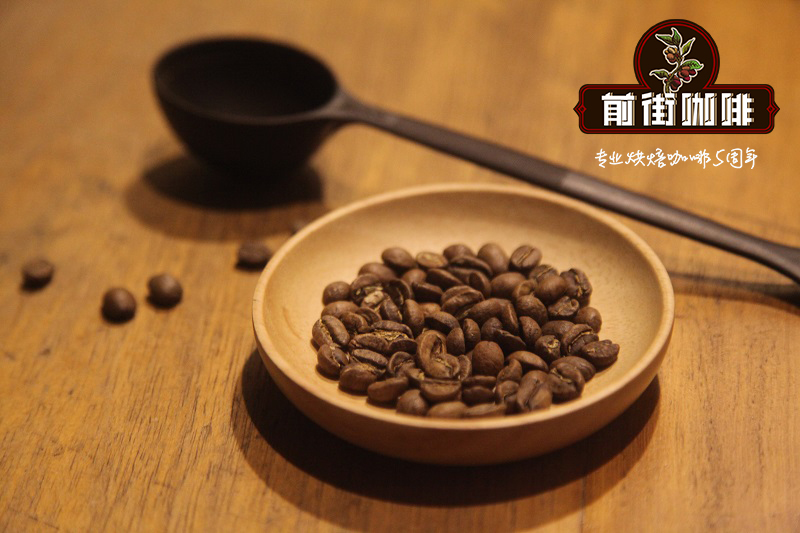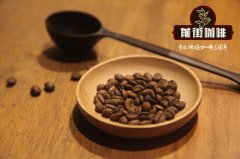How about African Ugandan coffee A brief introduction to the varieties of Ugandan coffee beans

Professional coffee knowledge exchange more coffee bean information please follow the coffee workshop (Wechat official account cafe_style)
Qianjie-Ugandan Coffee introduction
If Ethiopia is the birthplace of Arabica coffee, then Uganda is the hometown of Luodou. During the colonial era, with the encouragement of the British, Uganda began to widely cultivate low-altitude species of Robusta. Today, Uganda has become the second largest exporter of Robusta in the world. Eighty-five percent of the coffee grown in Uganda is robusta coffee.
Although it is a coffee-growing country dominated by Robusta, Uganda also produces high-quality Arabica coffee, and its Akabica cultivation history can be traced back to a hundred years ago. Today, most of the country's Arabica is grown in the southeast of Mount Elgon, 4321 meters above sea level, and some on the border between Uganda and Kenya. Coffee, bananas, peanuts and other plants grow in the mode of mixed agriculture, and tall fruit trees become shade trees for coffee, thus ensuring the yield of coffee.
SL28 is one of the most famous and popular varieties in Africa. As a result, it spread all the way from Kenya, where it was originally promoted, to other parts of Africa (especially in the Arabica coffee producing areas of Uganda) and now to Latin America. In the 2017 World Barista Competition (WBC), a SL28 from El Salvador was brilliant, turning over a lot of rose beans, and finally helped British barista Dale Harris win the world championship.
SL28 was first selected and cultivated from a single plant of drought-resistant tree species derived from Tanganyika in 1935. According to historical documents, during a visit to Tanganyika (present-day Tanzania) in 1931, AD Trench, a coffee breeder at Scott Lab, found a variety in Moduli that seemed to be tolerant to drought and diseases and insect pests, so he collected seeds and took them back to Scott Lab, where they were later proved to be drought resistant and were widely planted until they were replaced by their offspring SL28.
SL28 is suitable for middle and high altitude areas and is resistant to drought, but it is prone to epidemic coffee disease. SL28 is known for its simplicity and durability-which means it can be left unattended for years or even decades, and still has the ability to produce results. SL28 is planted in many parts of Kenya, and some trees are 60-80 years old, but can still bear fruit.
In short: Qianjie is a coffee research hall, happy to share the knowledge about coffee with you, we share unreservedly just to make more friends fall in love with coffee, and there will be three low-discount coffee activities every month. The reason is that Qianjie wants to make more friends drink the best coffee at the lowest price, which has been Qianjie's tenet for 6 years!
END
Important Notice :
前街咖啡 FrontStreet Coffee has moved to new addredd:
FrontStreet Coffee Address: 315,Donghua East Road,GuangZhou
Tel:020 38364473
- Prev

Introduction to the method of hand-brewing temperature of Yunnan small Coffee
Professional coffee knowledge exchange more coffee bean information please follow the coffee workshop (Wechat official account cafe_style) Qianjie-Yunnan Pu'er rose honey treatment hand-made sharing Yunnan Pu'er rose honey treatment production area: Pu'er altitude: 1200-1500m varieties: Katim treatment: rose honey treatment flavor: flower fragrance, orange peel, almond first we prepare all the coffee utensils
- Next

How about Ugandan coffee beans? is Ugandan coffee black?
Professional coffee knowledge exchange more coffee bean information please follow the coffee workshop (Wechat official account cafe_style) front street-Uganda Coffee introduction Uganda, located in East Africa, across the equator, east of Kenya, south of Tanzania and Rwanda, west of the Democratic Republic of the Congo, north of South Sudan, with a total area of 241500 square kilometers. Most of the territory is located in the East African Plateau, lakes and flat.
Related
- Beginners will see the "Coffee pull flower" guide!
- What is the difference between ice blog purified milk and ordinary milk coffee?
- Why is the Philippines the largest producer of crops in Liberia?
- For coffee extraction, should the fine powder be retained?
- How does extracted espresso fill pressed powder? How much strength does it take to press the powder?
- How to make jasmine cold extract coffee? Is the jasmine + latte good?
- Will this little toy really make the coffee taste better? How does Lily Drip affect coffee extraction?
- Will the action of slapping the filter cup also affect coffee extraction?
- What's the difference between powder-to-water ratio and powder-to-liquid ratio?
- What is the Ethiopian local species? What does it have to do with Heirloom native species?

